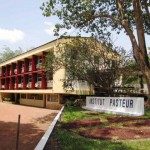Présentation
Dog constitutes one of the major reservoirs of the rabies virus (RABV), and the main vector of rabies in humans (nearly 60,000 deaths per year worldwide), in particular in the endemic areas in Asia and Africa. Effective measures to control and eradicate this zoonosis are well known, and are mainly based on the post-exposure prophylaxis for exposed patients, the control of canine populations, the mass vaccination of dogs against rabies and the awareness of the population and the mobilisation of the stakeholders. However, in order to set up these measures effectively in the endemic areas, one of the first elements relies on precise understanding of the dynamics of the infection in its reservoir, which varies among the geographic, epidemiological or environmental context. To date, studies incorporating all of these parameters on a large scale are still limited, particularly in the African context. Similarly, no study has yet exhaustively described the circulation of the virus at different scales of observation (urban, peri-urban, national and international / inter-regional) in the same country, in particular in the context of canine vaccination campaigns.
In order to try to answer these questions, this project relies on several collaborative research programs conducted in central and West Africa. The global and final aim of these activities is to provide some clues and recommendations to implement and to fit the best surveillance and control program for rabies, in order to reach the eradication of human rabies due to dog by 2030 as proposed by WHO-OIE-FAO.
This first one is based on a recent study leaded by the Swiss Tropical and Public Health Institute on a rabies surveillance program and mass vaccination campaigns of dogs in N’Djaména, Chad, with the collaboration of the Institut de Recherche en Elevage pour le Développement. During this study, two dog vaccination campaigns were able to stop the transmission of rabies in both dog and humans for several months. However, the resurgence of rabies appeared more quickly than expected by the mathematical models used at the end of these campaigns. Preliminary phylogenetic analysis conducted on the RABV virus strains suggested the existence of a reintroduction via exposed animals from adjacent rural areas. Further investigations on this potential phenomenon of reintroduction and circulation between rural and urban areas are ongoing, at the peri-urban scale but also at the national in order to obtain a model of dissemination and control (based on phylogenetic analysis as well as ecological and environmental factors) that can be transposed to other African countries.
In a second step, this investigation is extended at the inter-regional level, with the inclusion of the bordering zones of the neighbouring countries, with the establishment of specific collaborations in Cameroon, Nigeria and the Central African Republic. Here again, we will add to classical phylogenetic analysis some ecological and environmental parameters, in order to identify the main drivers of the spread and exchange of canine rabies in this region. In addition, a study is conducted on dog rabies epidemiology in a specific region of Democratic Republic of Congo with the Swiss Tropical and Public Health Institute.
In addition to the studies carried out in central Africa, this approach is extended to a second African region, with West Africa, in order to compare mechanisms for the spread of rabies between these two environments and to assess the applicability of control and eradication methods. Partners countries in this study are Côte d’Ivoire, Liberia and Mali.
Ultimately, all of these results will represent essential elements for the implementation of the next rabies control plans in Chad, but also in the other neighbouring countries, including the Central African Republic with the second research project ERVB (rabies elimination in the city of Bangui), conducted in collaboration with Institut Pasteur de Bangui in Central African Republic, which aims is to eliminate rabies in Bangui using a “One Health” approach.





